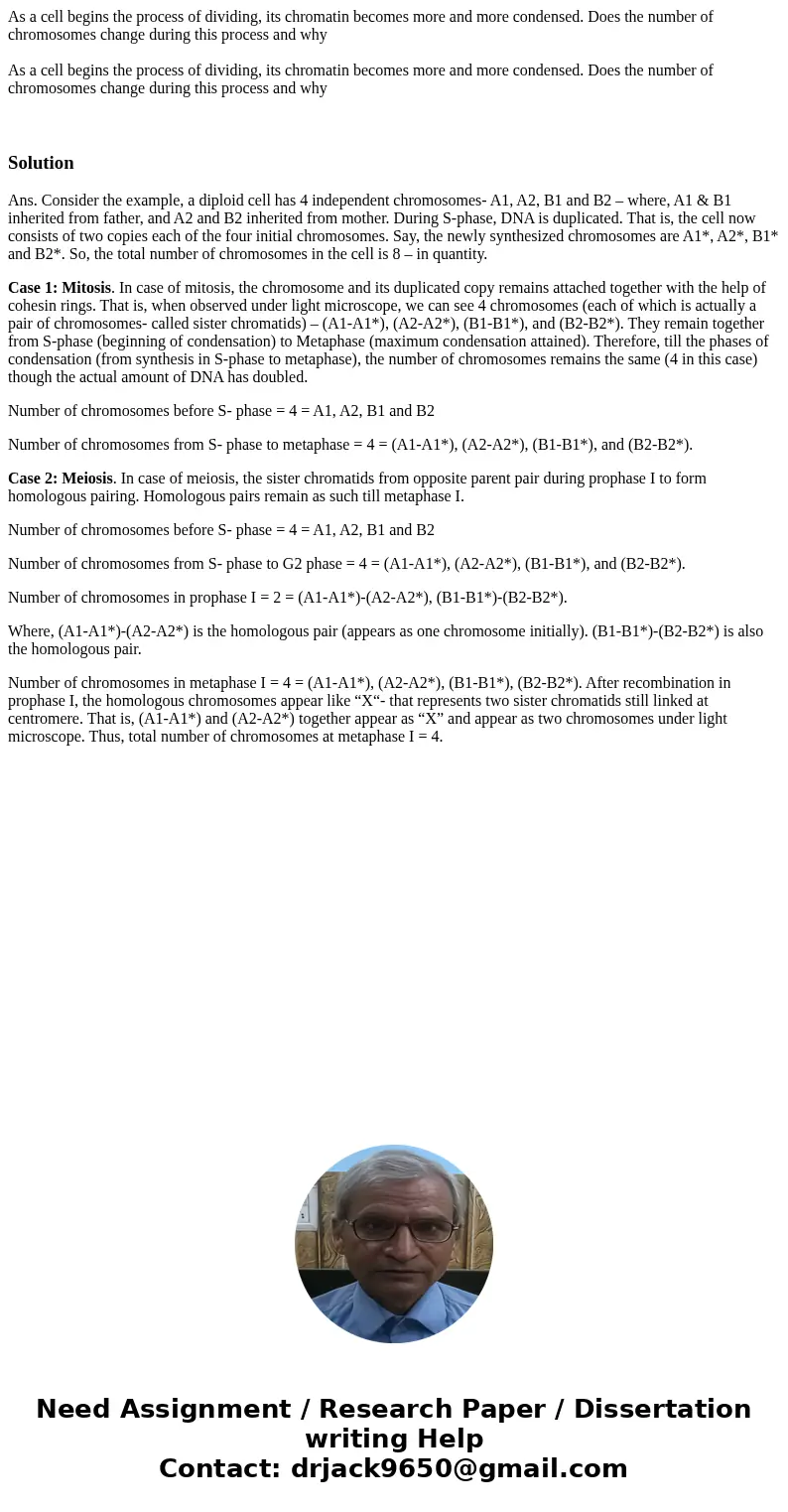As a cell begins the process of dividing its chromatin becom
Solution
Ans. Consider the example, a diploid cell has 4 independent chromosomes- A1, A2, B1 and B2 – where, A1 & B1 inherited from father, and A2 and B2 inherited from mother. During S-phase, DNA is duplicated. That is, the cell now consists of two copies each of the four initial chromosomes. Say, the newly synthesized chromosomes are A1*, A2*, B1* and B2*. So, the total number of chromosomes in the cell is 8 – in quantity.
Case 1: Mitosis. In case of mitosis, the chromosome and its duplicated copy remains attached together with the help of cohesin rings. That is, when observed under light microscope, we can see 4 chromosomes (each of which is actually a pair of chromosomes- called sister chromatids) – (A1-A1*), (A2-A2*), (B1-B1*), and (B2-B2*). They remain together from S-phase (beginning of condensation) to Metaphase (maximum condensation attained). Therefore, till the phases of condensation (from synthesis in S-phase to metaphase), the number of chromosomes remains the same (4 in this case) though the actual amount of DNA has doubled.
Number of chromosomes before S- phase = 4 = A1, A2, B1 and B2
Number of chromosomes from S- phase to metaphase = 4 = (A1-A1*), (A2-A2*), (B1-B1*), and (B2-B2*).
Case 2: Meiosis. In case of meiosis, the sister chromatids from opposite parent pair during prophase I to form homologous pairing. Homologous pairs remain as such till metaphase I.
Number of chromosomes before S- phase = 4 = A1, A2, B1 and B2
Number of chromosomes from S- phase to G2 phase = 4 = (A1-A1*), (A2-A2*), (B1-B1*), and (B2-B2*).
Number of chromosomes in prophase I = 2 = (A1-A1*)-(A2-A2*), (B1-B1*)-(B2-B2*).
Where, (A1-A1*)-(A2-A2*) is the homologous pair (appears as one chromosome initially). (B1-B1*)-(B2-B2*) is also the homologous pair.
Number of chromosomes in metaphase I = 4 = (A1-A1*), (A2-A2*), (B1-B1*), (B2-B2*). After recombination in prophase I, the homologous chromosomes appear like “X“- that represents two sister chromatids still linked at centromere. That is, (A1-A1*) and (A2-A2*) together appear as “X” and appear as two chromosomes under light microscope. Thus, total number of chromosomes at metaphase I = 4.

 Homework Sourse
Homework Sourse